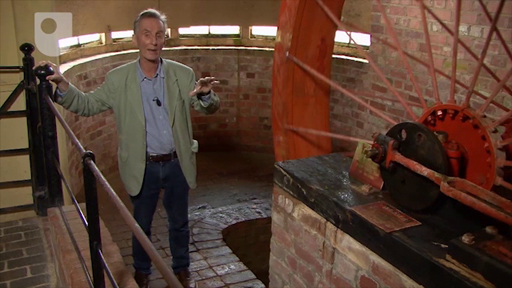Week 5: Hydroelectricity
Introduction
This week begins with a discussion of the nature of the hydro resource and its present contribution to world energy. This is followed by a summary of the basic science and an account of the development of water power, leading to a discussion of modern hydro turbine systems. The remaining sections are concerned with the problems and the potentialities of hydroelectricity.

Transcript
This week’s renewable energy source is hydropower. Essentially power derived from moving water as in traditional water wheels like this one that have been used for centuries to pump water and grind corn. Modern hydropower plants generate electricity using more sophisticated water turbines that were developed early in the 20th century. The amount of energy that can be derived from water power plants depends essentially on two things, the rate of flow of the water and the head, that’s the height through which the water falls.
There are a variety of water turbines designed to suit the characteristics of the low, medium and high head hydro schemes.
Hydroelectric systems now contribute to about 16% of the world’s electricity. Many of the hydropower plants are extremely large in scale and can have major effects, negative as well as positive, on the surrounding environment and population.
As well as generating electricity hydropower plants can be used to store electric power by using electricity at times of low demand to pump water up to a high reservoir. When the demand for electricity is increased it can be generated by allowing the stored water to fall down again through turbines powering electric generators.
The UK has two such pump storage schemes at Cruachan in Scotland and Dinorwig in Wales.
Once a modern hydropower plant has been constructed it has extremely low running costs and extremely high capital costs. This makes it desirable to have extremely low interest rates on the invest to capital and a very long payback time.
This means that the future of large hydro schemes are likely to be funded by governments which can satisfy these long term investment criteria.
By the end of this week, you will be able to:
- discuss at a basic level the magnitude of the world’s hydro resource and its present contribution to world total primary energy consumption
- describe at an introductory level the main features and the modes of operation of the principal types of water turbine
- describe at an introductory level the principle of pumped storage plants and their role in an integrated electrical supply system
- understand at an introductory level the environmental and social effects, beneficial and deleterious, of large-scale hydroelectricity, and the potentialities and problems of small-scale systems.
